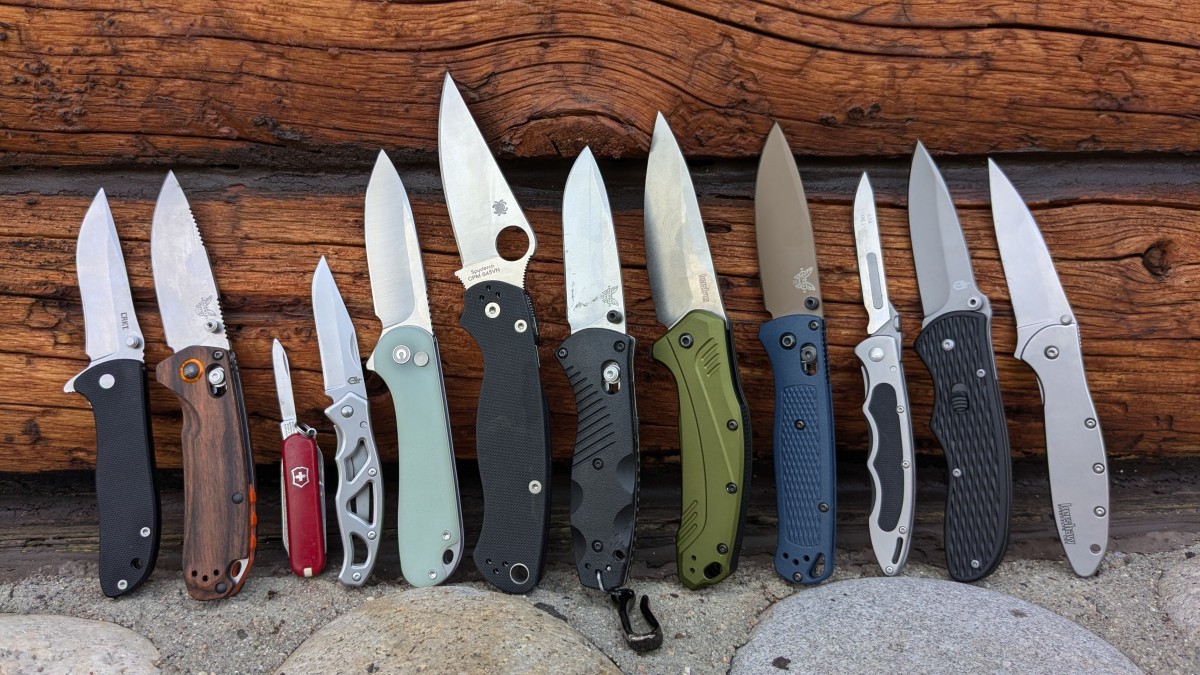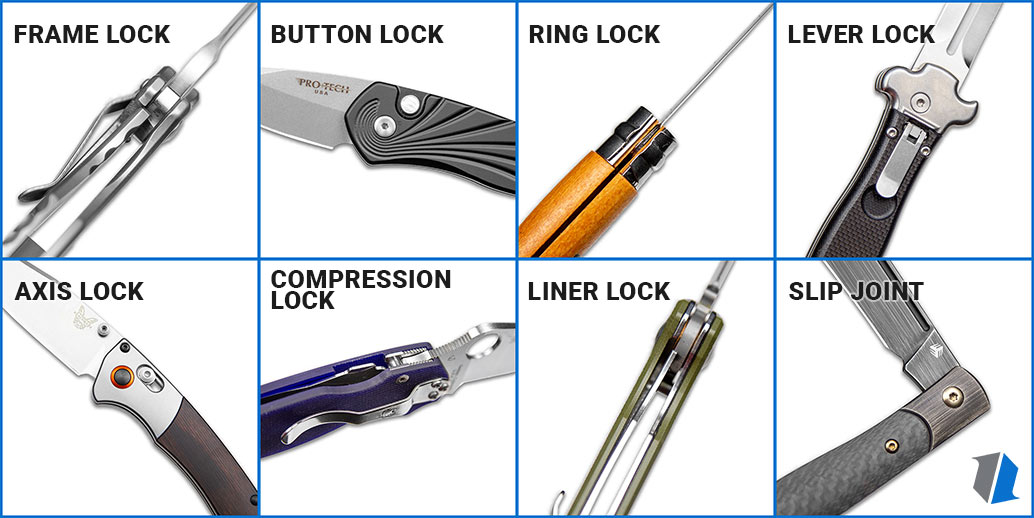Choosing Your First Folding Knife: A Beginner's Guide to Blade Styles and Materials
- Posted on

A quality folding knife represents one of the most practical and versatile tools you can carry, capable of handling countless daily tasks while remaining compact and portable. Making the right choice from the start ensures you develop positive associations with folding knives while avoiding the frustration that comes from poorly matched tools and applications.
Selecting your first folding knife can feel overwhelming with the numerous blade styles, steel types, handle materials, and design options available in today's market. However, understanding the fundamental characteristics that define knife performance helps you make informed decisions that align with your intended use, budget, and personal preferences. This comprehensive guide breaks down the essential elements of folding knife selection, providing the knowledge you need to choose a tool that will serve you reliably for years to come.
A quality folding knife represents one of the most practical and versatile tools you can carry, capable of handling countless daily tasks while remaining compact and portable. Making the right choice from the start ensures you develop positive associations with folding knives while avoiding the frustration that comes from poorly matched tools and applications.
Understanding Your Intended Use and Requirements
Before exploring specific blade styles and materials, clearly define how you plan to use your folding knife. Everyday carry (EDC) applications differ significantly from outdoor activities, professional use, or specialized hobbies, and each application benefits from different knife characteristics.
Consider the typical cutting tasks you encounter daily. Office workers might need precision cutting for packages, papers, and light utility tasks, while outdoor enthusiasts require more robust capabilities for rope, food preparation, and emergency situations. Tradespeople often need knives that withstand heavy use and maintain their edges through demanding applications.
Your lifestyle and carry preferences also influence optimal knife selection. Some users prioritize minimal weight and compact size for comfortable daily carry, while others prefer larger, more capable tools that handle diverse tasks effectively. Understanding these preferences helps narrow your options to knives that match your specific requirements.
Budget considerations play an important role in first knife selection. While premium knives offer superior materials and construction, many excellent entry-level options provide reliable performance at accessible prices. Setting realistic budget expectations helps you focus on knives that offer the best value within your price range.
Blade Styles: Form Follows Function

Blade shape significantly impacts cutting performance, with each style optimized for specific applications and cutting techniques. Understanding these differences helps you select a blade that excels in your most common use scenarios.
Drop Point Blades represent the most versatile option for first-time buyers, combining excellent strength with precise tip control. The curved spine and straight cutting edge create a blade that handles general cutting tasks effectively while providing good penetration capability. Drop point designs work well for both utility tasks and outdoor applications, making them ideal choices for users who need one knife to handle diverse requirements.
Clip Point Blades feature a distinctive "clipped" or cut-away section near the tip that creates a finer point with enhanced piercing capability. This design excels at detailed work and provides excellent slicing performance, making it popular for hunting, fishing, and precision cutting tasks. The fine tip offers superior control for intricate work but may be more fragile than drop point alternatives.
Tanto Blades showcase angular, chisel-like tips that provide maximum strength for heavy-duty applications. Originally inspired by Japanese sword geometry, tanto blades excel at piercing hard materials and withstand demanding use that might damage other blade styles. However, the angular design can be more challenging to sharpen and may not provide optimal performance for general cutting tasks.
Sheepsfoot and Wharncliffe Blades feature straight cutting edges with curved or angled spines that eliminate pointed tips. These designs excel at controlled cutting tasks where tip safety is important, such as working around people or in confined spaces. The blade geometry provides excellent edge control and reduces the risk of accidental punctures.
Spear Point Blades offer symmetrical designs with points centered on the blade's axis, providing balanced performance for both cutting and piercing tasks. These blades typically feature strong tips with good penetration capability while maintaining effective cutting geometry along the entire edge.
When choosing your first folding knife, drop point blades generally provide the best combination of versatility, strength, and ease of use that makes them ideal starting points for most users.
Steel Types: The Heart of Performance

Blade steel determines fundamental performance characteristics including sharpness, edge retention, corrosion resistance, and ease of sharpening. Understanding basic steel categories helps you select materials that match your performance priorities and maintenance preferences.
Stainless Steel Options provide excellent corrosion resistance and low maintenance requirements that appeal to new knife users. Popular stainless steels like 8Cr13MoV, AUS-8, and 420HC offer good performance at reasonable prices, making them common choices for entry-level knives. These steels typically sharpen easily and maintain adequate edge retention for general use.
Premium stainless options like S30V, S35VN, and VG-10 provide superior edge retention and corrosion resistance but command higher prices. These advanced alloys justify their cost through enhanced performance and longevity, representing excellent investments for users who prioritize cutting performance.
Carbon Steel Alternatives offer exceptional sharpness and ease of sharpening but require more careful maintenance to prevent rust and corrosion. High-carbon steels like 1084 or 5160 can achieve remarkable sharpness levels but demand regular cleaning and oiling to maintain their condition.
Tool Steel Options like D2 and A2 provide excellent edge retention and toughness while offering some corrosion resistance. These steels bridge the gap between stainless and carbon options, providing enhanced performance characteristics for users willing to invest in quality materials.
For first-time buyers, quality stainless steels typically provide the best balance of performance and convenience, allowing you to focus on learning proper knife use and basic maintenance without worrying about complex care requirements.
Handle Materials and Ergonomics

Handle design significantly impacts comfort, grip security, and long-term durability. The handle must provide secure grip in various conditions while remaining comfortable during extended use.
Natural Materials like wood and bone offer traditional aesthetics with excellent grip characteristics when properly maintained. These materials develop character over time but may require more care than synthetic alternatives. Wood handles often provide superior comfort but can be affected by moisture and temperature changes.
Synthetic Options including G-10, Micarta, and polymer composites provide excellent durability and weather resistance. G-10 fiberglass offers aggressive texturing with superior strength, while Micarta provides more comfortable grip with good durability. Modern polymer handles often incorporate ergonomic contouring and may include grip textures that enhance security.
Metal Handles using aluminum, titanium, or stainless steel provide maximum durability and distinctive aesthetics. However, metal handles can become slippery when wet and may feel cold in low temperatures. Some metal handles include texturing or grip inserts to improve handling characteristics.
Handle size and shape should match your hand dimensions and grip preferences. Larger hands typically benefit from bigger handles that provide full grip engagement, while smaller hands may find compact designs more comfortable and controllable.
Size Considerations: Balancing Capability and Portability

Blade length significantly impacts both cutting capability and carry convenience. Understanding the trade-offs between size and performance helps you select dimensions that match your priorities.
Small Knives (2-3 inches) excel at discrete carry and precise tasks but may struggle with larger cutting jobs. These compact tools work well for office environments and situations where minimal size and weight are priorities.
Medium Knives (3-4 inches) provide excellent balance between capability and portability, handling most daily tasks effectively while remaining comfortable for extended carry. This size range represents the sweet spot for most first-time buyers.
Large Knives (4+ inches) offer maximum cutting capability but may be less comfortable for daily carry and could face legal restrictions in some areas. These sizes work well for outdoor activities and heavy-duty applications but may be impractical for general EDC use.
Consider local laws regarding blade length, as many jurisdictions impose restrictions on knife carry. Understanding these regulations helps you select compliant options that avoid legal complications.
Locking Mechanisms: Safety and Reliability

Folding knives require secure locking mechanisms that prevent accidental closure during use. Different lock types offer varying levels of strength, ease of operation, and maintenance requirements that impact user experience and safety.
The mechanical aspects of these locking systems significantly influence knife performance and user satisfaction. Folding Knife Mechanisms Explained: Comparing Lockbacks, Liner Locks, and Frame Locks provides detailed analysis of different locking mechanisms, helping you understand the advantages and limitations of each system to make informed selections based on your intended use and handling preferences.
Quality Indicators and Value Assessment
Recognizing quality construction helps you identify knives that provide reliable long-term performance. Several key indicators distinguish well-made knives from inferior alternatives.
Blade centering should be precise, with the blade sitting exactly in the center of the handle when closed. Poor centering indicates manufacturing inconsistencies that may affect performance and longevity. Smooth action throughout the opening and closing cycle suggests quality pivots and proper adjustment.
Fit and finish quality appears in details like even grinds, consistent handle gaps, and smooth transitions between materials. Premium knives exhibit attention to detail that reflects quality manufacturing processes and materials.
Lock engagement should be solid and consistent, providing confidence in the mechanism's reliability. Excessive play or inconsistent engagement suggests manufacturing issues that may compromise safety and performance.
Building Your Knife Knowledge and Experience
Understanding how a quality folding knife enhances daily life helps justify the investment in proper tools. How a Quality Folding Knife Becomes Your Most Versatile Tool explores the numerous applications and advantages that make folding knives essential components of prepared living and professional effectiveness.
Starting with one well-chosen knife allows you to develop proper handling techniques, maintenance skills, and understanding of your preferences before expanding your collection. Many experienced users find that their first quality knife remains a favorite throughout years of collecting and use.
Making Your Selection
Quality folding knives offer reliable performance that grows more valuable with experience and proper care. Focus on reputable manufacturers known for consistent quality, appropriate blade styles for your intended use, and construction quality that justifies the investment.
Consider purchasing from retailers who provide detailed specifications, customer support, and return policies that protect your investment. Quality dealers often provide valuable guidance and stand behind their products with service and support that enhances ownership experience.
Conclusion
Choosing your first folding knife involves balancing multiple factors including blade style, steel type, handle materials, size, and budget considerations. By understanding how these elements impact performance and focusing on your specific needs and preferences, you can select a tool that provides years of reliable service while serving as an foundation for developing knife knowledge and appreciation.
The key to successful first knife selection lies in matching tool characteristics to intended use while prioritizing quality construction that ensures reliable performance. Start with proven designs from reputable manufacturers, focus on versatile blade styles and reliable steel types, and allow your experience with this first knife to guide future selections as your knowledge and preferences develop.
A well-chosen first folding knife becomes more than just a tool – it becomes a trusted companion that handles countless daily challenges while demonstrating the value and satisfaction that comes from investing in quality equipment designed to serve you reliably for years to come.

